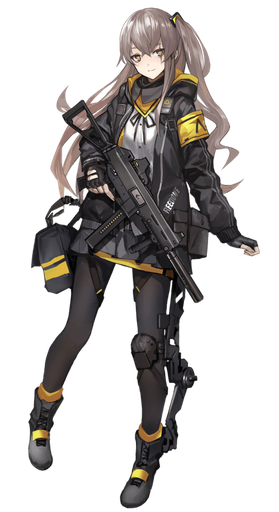A web application to add and customise airsoft loadouts, to help organise your weaponry and tools. These can then be shared and assigned to upcoming events that you're attending. After all, preparation is half the battle. Find the app at raif.us.
To run Raifu locally, you will need to follow a certain number of steps to configure all required elements.
Create a .env file in web to supply your Firebase credentials. If you need to create a Firebase project, you can get
started here. When you create a Firebase project and add a web app, you will be provided
with a few settings. Set these in your .env file with the following keys:
VITE_FIREBASE_APIKEY
VITE_FIREBASE_AUTH_DOMAIN
VITE_FIREBASE_PROJECT_ID
VITE_FIREBASE_APP_ID
Your .env file should now look something like this:
VITE_FIREBASE_APIKEY=myapikey
VITE_FIREBASE_AUTH_DOMAIN=myauthdomain
VITE_FIREBASE_PROJECT_ID=myprojectid
VITE_FIREBASE_APP_ID=my:app:id
Next, install the firebase-tools package from npm with npm i -g firebase-tools. This contains the emulator to spin up a local firebase development backend. Then run firebase login to login
with your Google account linked to your firebase project.
Finally, replace the existing project id with your Firebase project id in .firebaserc.
Raifu uses PostgreSQL for data storage and requires a connection to run. If you don't have an existing PostgreSQL
instance, it is recommended to use Docker to spin one up using the docker-compose file in root. Once configured, create a database and run the migration script in sql/create_tables.
With the emulator installed, and the database spun up, cloud functions need to know where the database is. To point the cloud functions to the database, create a .runtimeconfig.json file in the functions directory containing the database credentials:
{
"db": {
"user": "YOUR_DATABASE_USER",
"password": "YOUR_DATABASE_PASSWORD",
"name": "YOUR_DATABASE_NAME",
"host": "YOUR_DATABASE_HOST"
}
}
Finish the setup by running npm run init to install all required packages in both the web client and the cloud functions.
You should now be ready to run the project locally, using npm start. This will spin up both the React development
server and the Cloud Functions emulator.
Sometimes the Firebase functions emulator requires admin privileges on Windows to run. If the Firebase functions are not
running, try running npm start in a terminal with elevated privileges.
To request a weapon or item, please add an issue with the request tag.
If you'd like to add a particular weapon or item, please follow the following steps (a guide on creating the image is below):
- Add the item to the file
src/firebase/database/entities/lookups/platforms.js - Add the appropriate image vector to
src/assets/outlines/[type]/[platform]/[itemname].svg
All images must conform to the style used throughout Raifu, being a single basic white outline with minimal to no inner detail (unless said detail is a popular characteristic of the weapon). Weapons should be at a 45 degree angle, with the barrel pointing to the top right, whereas gear and attachments should be upright.
Ensure that the thickness of the outline is consistent with other items.
It is recommended that a canvas of W:220px, H:235px is used for weapons and W:220px, H:80px for attachments as this matches the card content size.
Ensure that any spaces in your weapon name are replaced by hyphons in your filename. For example, adding Desert Eagle,
an image named desert-eagle.svg should be added.
Also ensure that any periods in your weapon name are not present in your filename. For example, adding AR .556, an
image named ar-556.svg should be added.
Most images were created using Inkscape, a free open source vector graphics editor. From within Inkscape, use the following steps:
- In
File->Document Properties, set this to W:220px, H: 235px or W:220px, H:80px depending on the item you are creating an image for. This gives you a 'Canvas' to stay inside, which matches the aspect ratio and size of the box the image will be placed in. - Find your base image and copy this into Inkscape.
- Open the
Trace Bitmapoption inPath->Trace Bitmap. - Click
Live Previewto see what you're working with. - Click
Remove Background - In the
Optionstab, up theSurpress Specklessetting to somewhere around 100. This ensures no little details are left. - Modify the
Brightness Cutoffuntil a vast majority of the weapon is filled black. Small white speckles are okay due to settingSurpress Speckles(ensure the cutoff isn't too high, as this makes the outline jagged and inaccurate). - Click
Okonce you're happy. - Delete the original image.
- If there are any details within the outline that need to be deleted, use the
Edit paths by nodestool (pressF2), highlight the nodes that make up the inner detail and delete them. - Open the
Fill and Strokepanel withCtrl-Shift-F - Use
No Paint(the X) for Fill, andFlat Colurfor Stroke Paint. - Set the Stroke Paint colour to white (255,255,255).
- If necessary, rotate the image so that it's at a 45 degree angle, with the barrel pointing to the top right. This
can be done in the
Transformpanel (Ctrl-Shift-M), in theRotatetab. You can also flip the image by pressingHwith the image selected. - Thicken the outline in
Fill and Strokepanel, in theStroke Styletab. For consistency, use a value of around 0.4mm
Outside of the functionality, the purpose of this app was to pick up a few new technologies. These were:
